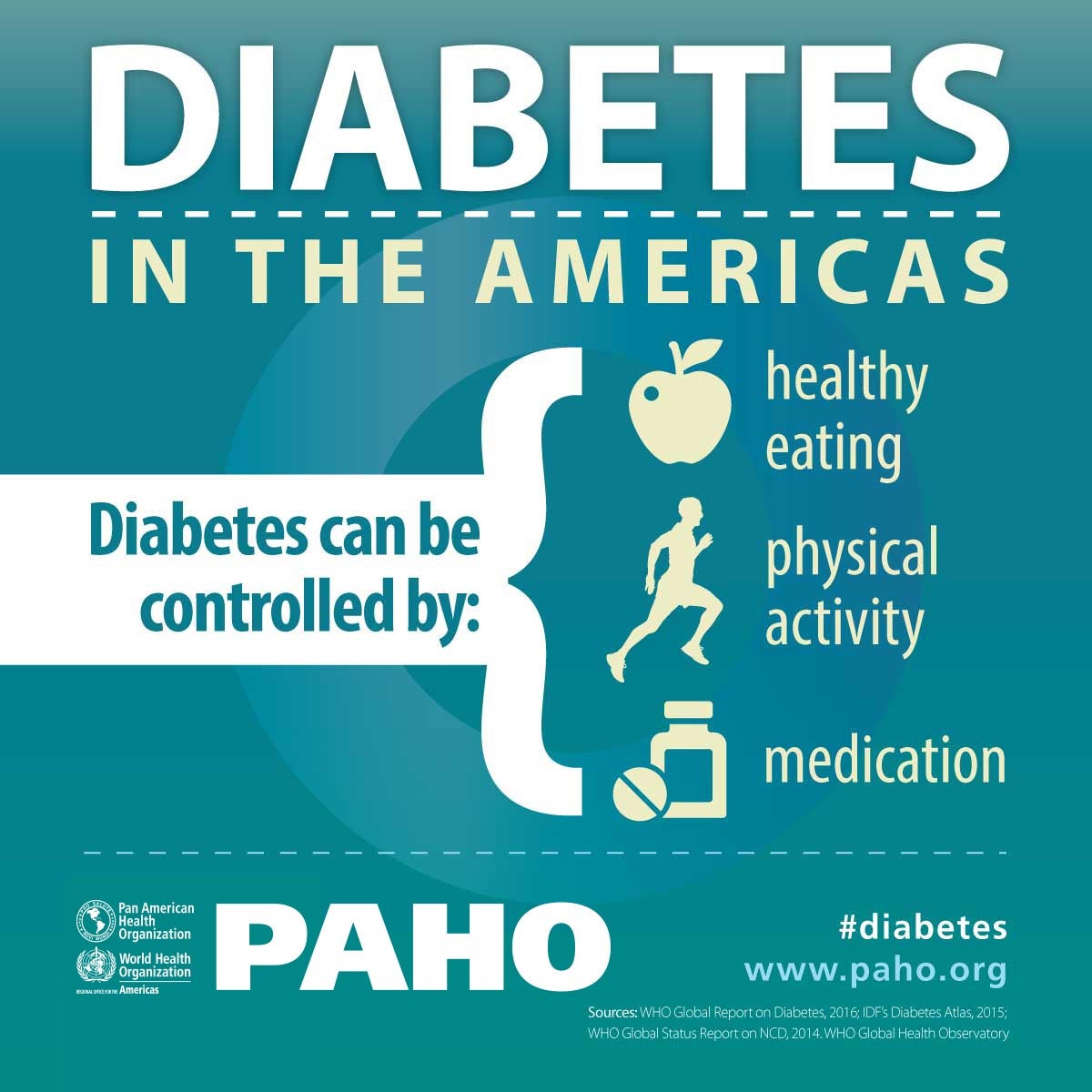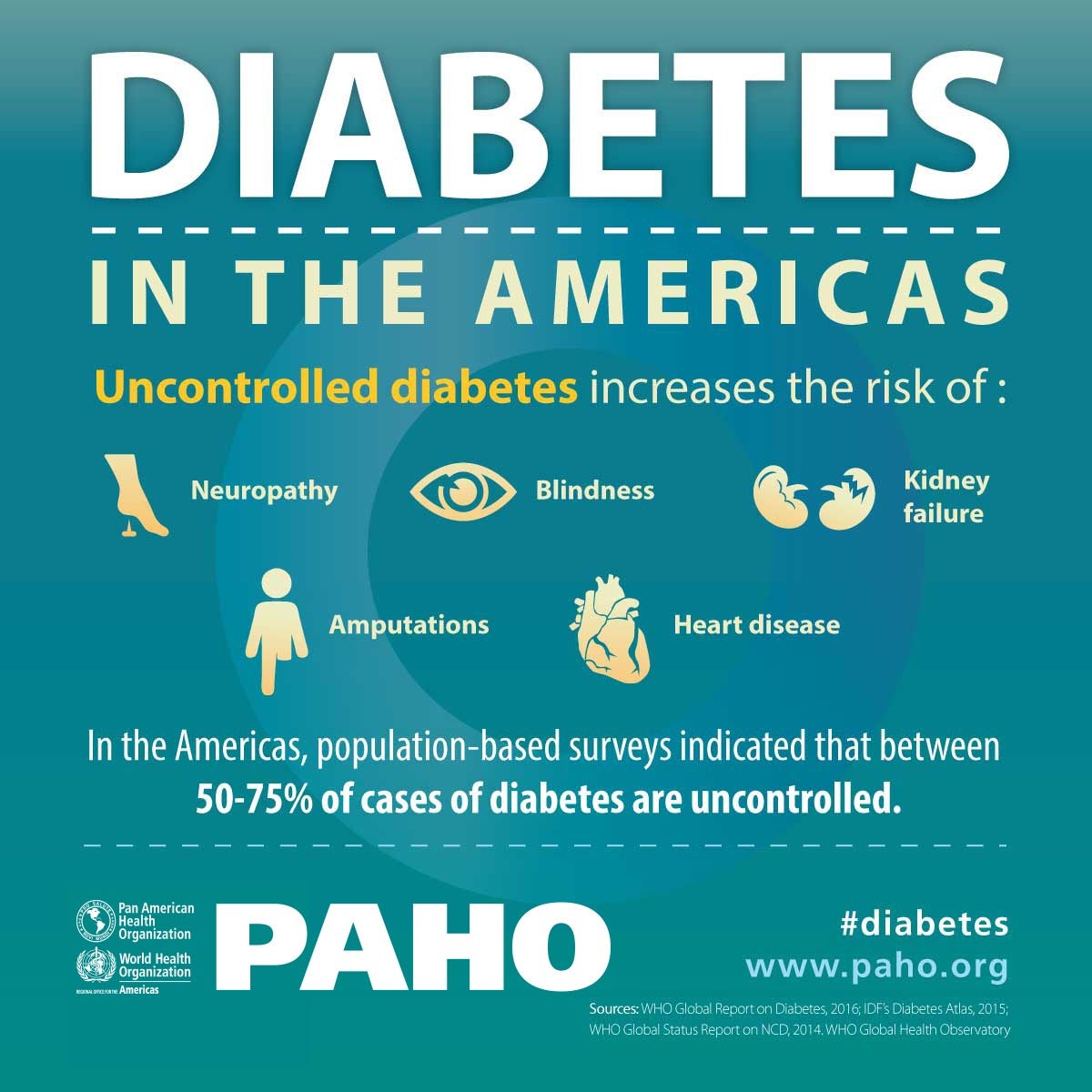Diabetes
PAHO/WHO
Framework, indicators and application - WHO
Diabetes is a chronic, metabolic disease characterized by elevated levels of blood glucose (or blood sugar), which leads over time to serious damage to the heart, blood vessels, eyes, kidneys, and nerves. The most common is type 2 diabetes, usually in adults, which occurs when the body becomes resistant to insulin or doesn't make enough insulin. In the past three decades, the prevalence of type 2 diabetes has risen dramatically in countries of all income levels. Type 1 diabetes, once known as juvenile diabetes or insulin-dependent diabetes, is a chronic condition in which the pancreas produces little or no insulin by itself. For people living with diabetes, access to affordable treatment, including insulin, is critical to their survival. There is a globally agreed target to halt the rise in diabetes and obesity by 2025. (PAHO/WHO)
World Diabetes Day
 "Breaking Barriers, Bridging Gaps,” underpins our commitment to reducing the risk of diabetes and ensuring that all people diagnosed with diabetes have access to equitable, comprehensive, affordable, and quality treatment and care. Join us in raising awareness, spreading knowledge, and creating lasting change for all affected by diabetes." (PAHO/WHO)
"Breaking Barriers, Bridging Gaps,” underpins our commitment to reducing the risk of diabetes and ensuring that all people diagnosed with diabetes have access to equitable, comprehensive, affordable, and quality treatment and care. Join us in raising awareness, spreading knowledge, and creating lasting change for all affected by diabetes." (PAHO/WHO)
Obesity as a precursor to diabetes
 "Adults are considered overweight if they have a body mass index (BMI) between 25 kg/m2 and 29.9 Kg/m2 and considered obese if their BMI is above 30 Kg/m2. Research has demonstrated a strong and consistent link between obesity and diabetes; increases in BMI are associated with increased risk for diabetes and abdominal obesity has emerged as a strong predictor of diabetes." (PAHO/WHO)
"Adults are considered overweight if they have a body mass index (BMI) between 25 kg/m2 and 29.9 Kg/m2 and considered obese if their BMI is above 30 Kg/m2. Research has demonstrated a strong and consistent link between obesity and diabetes; increases in BMI are associated with increased risk for diabetes and abdominal obesity has emerged as a strong predictor of diabetes." (PAHO/WHO)


